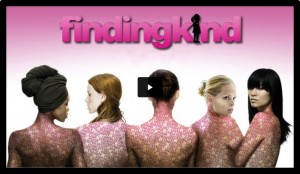 The issue of bullying has gotten a lot of attention in the last couple of years, and while most of that has resulted in raising awareness and developing new policies to protect children, not all of it is good. Some of those who have jumped on the bullying bandwagon have done so because it is a ticket into the spotlight, or because they feel they have something important to contribute to the discussion.
The issue of bullying has gotten a lot of attention in the last couple of years, and while most of that has resulted in raising awareness and developing new policies to protect children, not all of it is good. Some of those who have jumped on the bullying bandwagon have done so because it is a ticket into the spotlight, or because they feel they have something important to contribute to the discussion.
Sometimes their intentions are really good but their understanding of the big picture falls short. They don’t get it. And what they put out there can actually make things worse by muddying it up in people’s minds.
That’s exactly what struck me about the anti-bullying documentary Finding Kind. Perhaps you haven’t heard of this film or the “Finding Kind campaign” surrounding it. Started by Lauren Parsekian and Molly Thompson, two recent California college grads, it documents a road trip they took across America to explore what they describe as “girl world” and promote a return to kindness. They edited together their interviews and testimonials from girls in elementary, middle and high schools, along with their own narrative perspective. They promote their film and Finding Kind campaign through the media, their website, and their own paid appearances.
When I saw Finding Kind at a Montreal-area high school last week, I was struck by both Parsekian and Thompson’s earnest commitment to making things better for girls everywhere. I was further impressed by the genuine compassion and energy of the high school guidance counsellor at the high school viewing I attended, who introduced and moderated the event for all the students in her school. And I really liked the underlying notion of teaching children the importance of kindness. There’s no question in my mind that our whole society would benefit from a newfound emphasis on civility, respect and compassion.
But I really hated the movie itself.
Why? Several reasons. First and foremost I took issue with their borderline misogynistic portrayal of “girl world.” Using anecdotal evidence and recollections from their own lives, they portray girls as essentially vicious, gossipy and backstabbing. According to them, this has always been the case, and they replay a scene from some forgotten 1950s-era black and white film to prove their case. See how mean that actress playing a high school girl is? Apparently that proves their point.
According to Parsekian and Thompson, this is all to be expected. Apparently meanness and cruelty are just built into female biology. It seems we are always extremely jealous of each other and also terribly unsure of ourselves, and so we hurt each other. This excerpt from their website attempts to explain their point:
With the constant pressures girls face to look and act a certain way, competition and jealousy have gotten in the way of functional friendships. While males have been taught to compete in sports and to view each other as comrades, females have been taught to compete with each other, and view one another as threats. This is a concept we must unlearn quickly. It’s common to hear girls complain about how unfair it is that boys can maintain a group of friends throughout a lifetime, but for girls, having ONE true friend makes you lucky. These facts are evidence of the lack of connection and respect that we are talking about. We are here to change that.
Huh? What facts are they talking about exactly? This has not been my experience at all. And when I look at my three daughters, I see them surrounded by friends who enrich their lives. If the selectively chosen snippets of select interviews with girls aren’t enough to prove their case, they also conduct interviews with boys on the subject of mean girls. All of them, from teen boys hanging on the street to a pack of biker dudes, concur that girls can be catty and horrible. Some of the boys actually meowed and pretend to flash their claws to emphasize this.
At least twice we are told that boys can punch each other in the face and be totally fine with each other next day. As an educational consultant who frequently deals with schools about bullying issues, this wrongheaded portrayal of both sexes struck me as not only inaccurate, but also sexist and frankly quite dangerous.
But in this alternate reality, the key takeaway is that boys can let stuff slide and aren’t essentially mean like girls are.
Now to be clear, I am not disputing that girls can bully each other in terrible ways. I am very well aware of the cruelty that can be displayed between girls, from exclusion and rumours all the way to hair-pulling and beatings.
But that is only half the story. Nowhere in Finding Kind do we hear of the tremendous compassion, nurturing and love that girls can also show each other. We don’t get any stories of the small things girls do to stick up for their friends, or a classmate, or even a total stranger. Those things happen regularly, but to hear Parsekian and Thompson tell it, you’d think they were the first ones to discover acts of kindness and introduce it to the schoolgirls of America.
Check out this awesome list compiled by Soraya Chemaly of different programs, campaigns and other ways in which girls can be kind, compassionate and positive role models for others: She Heroes, 7 Wonderlicious, Black Girl Project, Adios Barbie, Princess Free Zone, Powered by Girls, Black Girls Rock!, Spark Movement, Miss Representation, BrainCake, Pigtail Pals, Girls’ Leadership Institute.
The whole gender essentialism story isn’t new. Girls and women have been told of their instinctive inborn faults for millennia (though the faults themselves may vary and be called different things, like hysteria or moral weakness or lack of intelligence). But this is all the worse because it comes from two young women who should know better, promoting their own self-interested kindness campaign as a solution.
The other reason this film made me cringe is because of the overly simplistic and facile solution it proposes to the complex topic of bullying. If only we could just be nice to each other.
Ooh. Why didn’t we think of that before? I guess our pretty little heads were too full of cookie recipes and the rumours we were planning to spread about our friends.
Actually, bullying isn’t even about nice at all, so Finding Kind totally misses the point. At its core, bullying is about social power. People who bully do so in order to shore up or improve their own tenuous spot in the social hierarchy. Sometimes they do it to frighten others into submission. Sometimes they do it to take down someone they perceive as a social threat. Sometimes they do it to show others how powerful they can be at manipulating others. There are many reasons.
And although the promotion of kindness is a lovely and laudable idea, it doesn’t even begin to take into account the underlying motivations for schoolyard (or online) cruelty.
So when they kept referring to their Finding Kind campaign, I was confused. I actually turned to the person next to me and said “What exactly is their campaign?” She told me it was to bring the message of kindness into schools, with pink bracelets and t-shirts or whatever.
That’s the whole of their campaign. Be nice.
So what’s wrong with telling girls to be nice? A lot.
My very perceptive friend, Lina Gordaneer, (also a blogger and the coolest high school librarian around) explains it succinctly:
Although I think we need to have more empathy for others, and I do see a real disconnect in the girls between how they see their behaviour and how they judge the behaviour of others, I think the last message we need to give our daughters is to be nice. They already know they should be nice. That is what good girls are: nice. […] But sometimes girls have legitimate disagreements and real reasons to be pissed off, and they just end up apologizing for their anger. The being “Nice” message is taken by our young girls to mean that they are not allowed to get mad or angry or disagree. In this way, the Finding Kind movie causes more harm than good.
Finally, I must take issue with the producers, who put themselves in the spotlight of their film and campaign. Unlike some critics, I didn’t mind their perky, conventional California beauty or frequent hugging, squealing and mugging for the camera — the high schoolers in the auditorium with whom I was watching the film seemed to identify with all that. But I must question how this plays into the media embrace of their admittedly empty shell of a campaign. There is no question in my mind that Good Morning America or CNN has been more willing to embrace them because they look so damned adorable on camera.
I just can’t help wondering whether this film would have enjoyed the same reception if they looked or acted like many of the girls particularly at risk for bullying in North American schools: those with special needs, learning or developmental delays, those with physical handicaps, mental health issues, kids who are overweight, gay, dealing with family dysfunction, anger management, lacking psychological resilience, self-esteem or just generally unable to advocate for themselves effectively.
In one scene near the end of the film, Parsekian features a long-ish interview with a woman she went to school with as a child, who poignantly describes the years of bullying she endured. And while Parsekian confesses she wishes she had spoken up for her in all that time, her sincerity falls flat. I cringed throughout that entire scene, waiting for the really significant moment where she would surely apologize for the part she played as a bystander in perpetuating the bullying.
I waited for nothing. There was no apology. How utterly, terribly disappointing. What a missed opportunity to showcase her newfound kindness.
So do I think showing it to a bunch of high school girls was a waste of time? No. Not when handled with the appropriate kind of facilitation, as I saw in the high school I visited last week. The conversation with the girls at the end of the film was adeptly steered by the guidance counsellor towards written apologies and pledges of kindness. Perhaps some of the message of kindness seeped in to some new places. That’s always a good thing.
But I do wish we could address the incredibly destructive idea of an inherently nasty “girl world.” Instead of telling girls they are mean and must do better, can we not also celebrate their acts of compassion and generosity? That kind of positive reinforcement and altered expectations will surely do more to raise the bar.
Because sometimes the kind is right there in front of our faces and we missed it because we weren’t looking.
 Friends who Like Justin Bieber. Photos of my friends before 2000 taken by my mom. Photos taken in New York City.
Friends who Like Justin Bieber. Photos of my friends before 2000 taken by my mom. Photos taken in New York City.
 A big challenge of parenting in a digital age is keeping up to date with the technologies our kids are using. Truth is, it’s time-consuming and constantly changing. Hard to fit that extra learning and guidance into schedules already crammed with carpools, swimming lessons, last-minute dinners and never-ending piles of laundry. And the reality for plenty of moms and dads is that they need their eight-year-old to figure out why the printer isn’t working or set up the PVR, never mind helping them wade through a gazillion levels of Facebook privacy controls.
A big challenge of parenting in a digital age is keeping up to date with the technologies our kids are using. Truth is, it’s time-consuming and constantly changing. Hard to fit that extra learning and guidance into schedules already crammed with carpools, swimming lessons, last-minute dinners and never-ending piles of laundry. And the reality for plenty of moms and dads is that they need their eight-year-old to figure out why the printer isn’t working or set up the PVR, never mind helping them wade through a gazillion levels of Facebook privacy controls.
